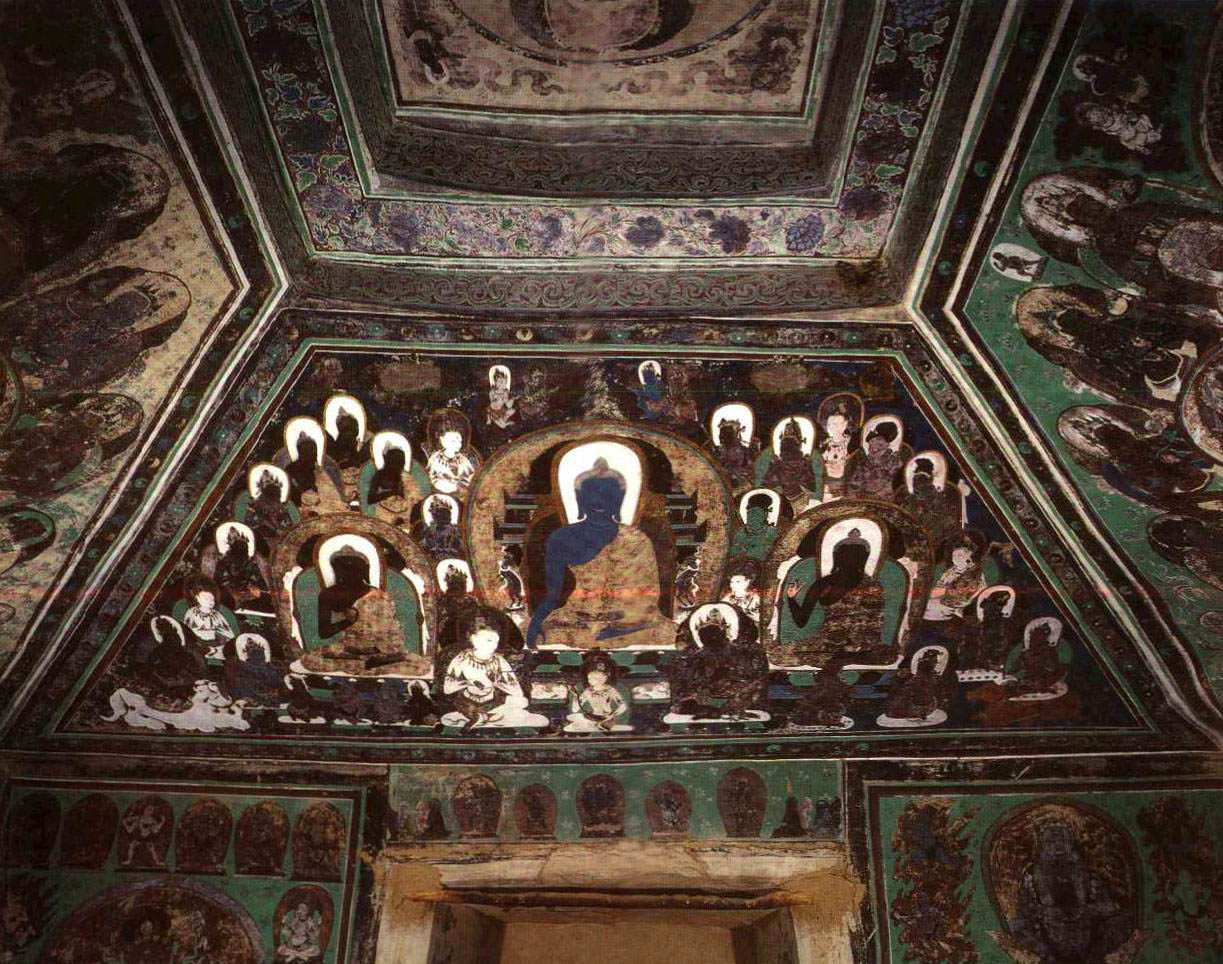Relics of Dunhuang Library Cave scattered throughout world

The No. 17 Cave, commonly known as the Library Cave, was once filled with Buddhist texts, silk paintings and Buddhist sculptures, but only a small number of them remain in China today.
The Dunhuang Mogao Grottoes are located on the eastern cliff of Mingsha Mountain, 25 kilometers southeast of Dunhuang City, Gansu Province. In 366, Buddhists in Dunhuang and its surrounding areas employed craftsmen to dig grotto temples, also known as family temples, on the cliff of Mingsha Mountain. It is recorded that in that year a monk of the Former Qin Kingdom (351-394) named Lezun paid a visit to Mingsha Mountain and dug the first grotto.
In 1900, a hidden cave, behind the frescos of an aisle through the No. 16 Cave in the north of the Dunhuang Mogao Grottoes’ south district, was suddenly found by a Taoist priest named Wang Yuanlu when he was cleaning sand.
This finding provided numerous precious materials for studying ancient Chinese and Central Asian history, geography, religion, economics, politics, ethnic groups, languages, literature, art and technology. However, after hearing the news, explorers from Britain, France, Japan, the United States, Russia and other Western countries stole cultural relics in the Dunhuang Mogao Grottoes, which led to most of them being scattered all over the world, causing an unprecedented calamity in the history of Chinese culture. Only a small number of them are preserved in China.
The hidden cave is commonly known as the Library Cave. Inside the four-sided cave, the walls are 3 meters long and 2.5 meters high. The roof of the cave tapers to a smaller size, so the full height of the cave is approximately 3 meters. The volume of the whole cave is about 22 cubic meters. Near the northern wall, there is a low rectangular platform, which was a bed for monks to meditate upon. On the top of the bed, there is a painted monk sculpture, which is about 1.2 meters high. On the northern side of the western wall, there is a niche with an embedded stone tablet that records the stories of a monk named Hongbian. This stone tablet was set up by Hongbian’s disciples and relatives after he passed away in 862 under the reign of Emperor Yizong in the Tang Dynasty (618-907).
The Library Cave was originally built as a shadow cave to commemorate monk Hongbian. But there was no authentic written record to explain when it was closed and became a library cave. Academics have numerous theories about the reason why this cave was closed. Some think this became a hiding place, while others believe it was discarded. According to the latest completion date of documents and Buddhist texts preserved in the cave, scholars estimated that it was last sealed in 1002, which is currently the prevailing theory in academia.
The Library Cave is a typical cave inside another cave. The manner in which the Library Cave was closed was based on Buddhist traditions. The cave was filled with Buddhist texts, silk paintings and Buddhist sculptures. Then the entrance was sealed with bricks and mud, and frescos were painted on the new wall. No one could identify by its appearance that there was a hidden cave behind the wall. The Library Cave contains more than 50,000 cultural relics from the Wei (220-265) and Jin (265-420) dynasties, including ancient manuscripts, Buddhist texts and other items, which were hidden for almost 900 years.
Between 1900 and 1910, these cultural relics were stolen by local officials and Westerners, which caused these priceless cultural relics to be scattered across 24 countries and fall into the hands of over 100 institutions and individuals all over the world. Although it stimulated the formation of Dunhuang Studies, Chinese scholar Chen Yinque once said: “Dunhuang records a miserable history of Chinese academics.”
